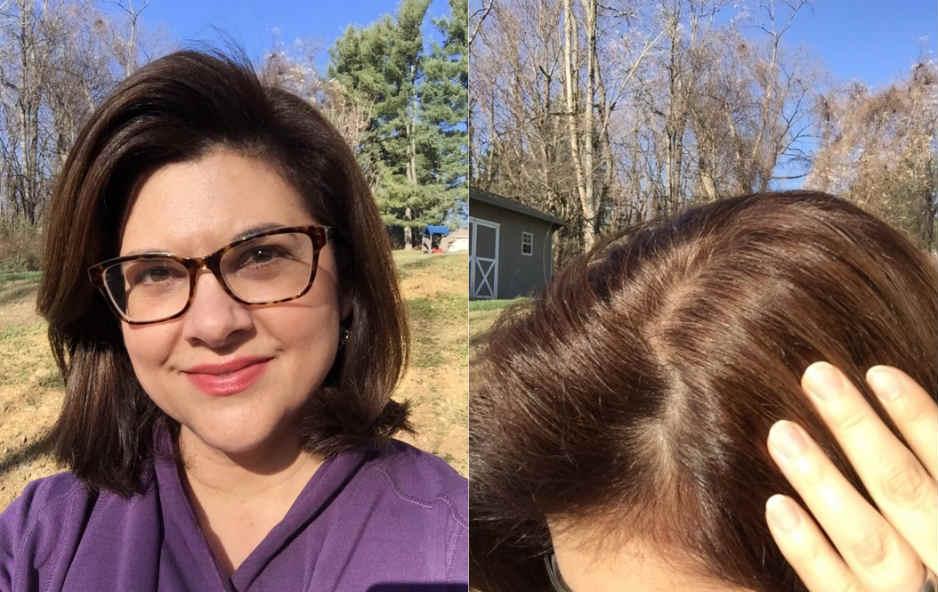Promos, Offers + More...
Madison Reed | July 08, 2016
Allergic Reactions to Hair Color

Image by Madison Reed
Allergic Reactions to Hair Dye
Allergies are nothing to sneeze. Whether it’s a scratchy throat, watery eyes, hives or worse, it’s your body’s way of fighting back. The common medical definition of allergies, according to Daniel More, MD is, “an abnormal reaction by a person's immune system against a normally harmless substance.” What that means is that when a person who is allergic encounters a trigger, the body reacts by releasing chemicals which cause allergy symptoms. Symptoms can range from being uncomfortable to downright dangerous. Here a few common questions that you should know the answers to...
Am I allergic to hair dye?
A hair dye allergy is exactly what you think it is—a reaction to chemicals found in any product that colors your hair. About 5% of people who use any sort of hair color develop an allergy (Sosted 2007). But when an allergy does strike, it can be just as severe as a nut or shellfish allergy. If you see any signs of swelling, itching or burning, listen to your body—you’re having an allergic reaction. It’s very common for these symptoms to start within a short period of time after application, but it’s possible that an allergic reaction to hair color can develop days or weeks after application, which can display itself as redness or itching on or around the head. According to Debra Jaliman, MD and author of Skin Rules, “If you develop a severe allergy, you could get blisters and hives and, though rare, difficulty breathing similar to an anaphylactic reaction.”
Is there a hair color ingredient that is setting off my allergic reaction?
PPD - Paraphenylenediamine
The most common hair color ingredient that people can have a reaction to is a substance known as PPD, shortened from the scientific name of paraphenylenediamine. There is much debate about the level of toxicity of PPD. What’s known is that it is an allergen and skin sensitizer, and contact with the skin can create serious reactions. PPD is frequently used in commercial hair colors—both drugstore and salon brands—and is primarily used to create darker shades of hair color. According to researchers at WebMD, PPD is found in more than two-thirds of commercial hair colors. In her book Skin Rules, Dr. Jaliman states that, “Black dye is known as being worse than others, but you can get a reaction no matter the shade you’re using or the original color of your hair.” If you're having a severe PPD reaction, it can present itself as a painful rash around the hairline, as well as facial swelling. Reactions can be serious, and although rare, can require hospitalization.
It’s important to know that it is not uncommon to suddenly develop an allergic reaction to a hair color you have been using for years. Your body can develop immune reactions to certain molecules over time, meaning you can start having an allergy at any point in your life. Just because you’ve been loyal to your tried and true brand for 10 years, it doesn’t mean you can’t develop an allergy.
In addition, hair color allergies can result from a variety of hair color ingredients. Every person is different, and can be allergic to different ingredients.
Even if you’re not allergic to anything else, you’re not exempt from chemicals reacting negatively with your body. That is why it’s important to always do a patch test prior to coloring. To perform a sensitivity skin patch test, mix a little color cream with a little activator. Apply mixture with cotton swab to your skin and wait 48 hours. If there is no sign of change to the area, then you’re ready to color. If you notice swelling, a rash or redness, you may have an allergy. Always consult your personal doctor if you have questions or concerns.
I may have an allergic reaction to hair color—what should I do?
If you notice signs of an allergic reaction such as a rash or burning sensation on the scalp, discontinue use, wash immediately and contact your doctor.
Why do I have allergies?
It’s a bit of a mystery why some people have allergies and others don’t. Research shows that they can run in families, and in some cases, anyone in your gene pool can share allergies to specific foods or medications. It’s widely believed that your body’s allergic response was once meant to protect against parasitic infections, although now seems to be an abnormal response to noninfectious triggers.
What’s the alternative?
Here’s the good news—Madison Reed offers a better way to color with ingredients you can feel good about. Our Radiant Cream Color is the first ever Smart 8-Free permanent hair color: free of ammonia, PPD, resorcinol, parabens, phthalates, gluten, SLS, and titanium dioxide. A key ingredient we used to replace PPD is a Para Toluene Diamine (PTD) ingredient called Toluene 2,5-Diamine Sulfate (TDS). TDS is shown to have a lower incidence of provoking sensitivity. And we added hair-loving nutrients keratin, argan oil, and ginseng root extract to protect and pamper hair. Our permanent hair color is handcrafted in Italy under the strictest EU health and safety standards. The result? Gorgeous, natural-looking color. Now that's a beautiful thing.
Additional Sources:
Medical Definition of Allergic reaction
Anaphylaxis
P-Phenylenediamine Hair Dye Allergy and Its Clinical Characteristics















